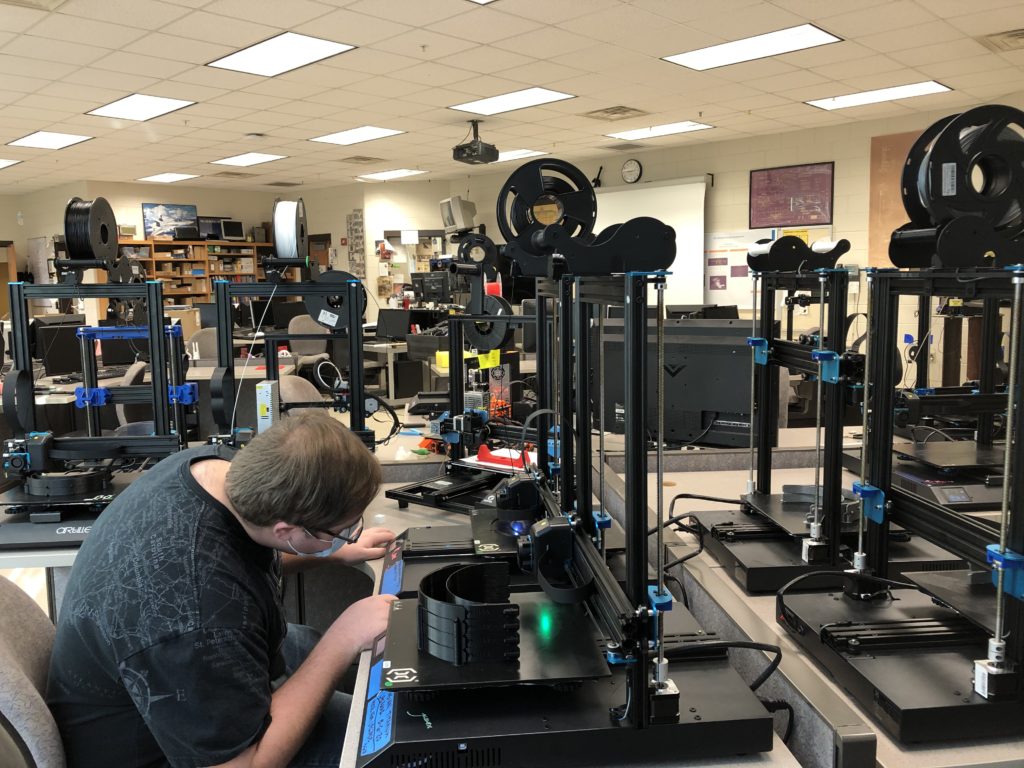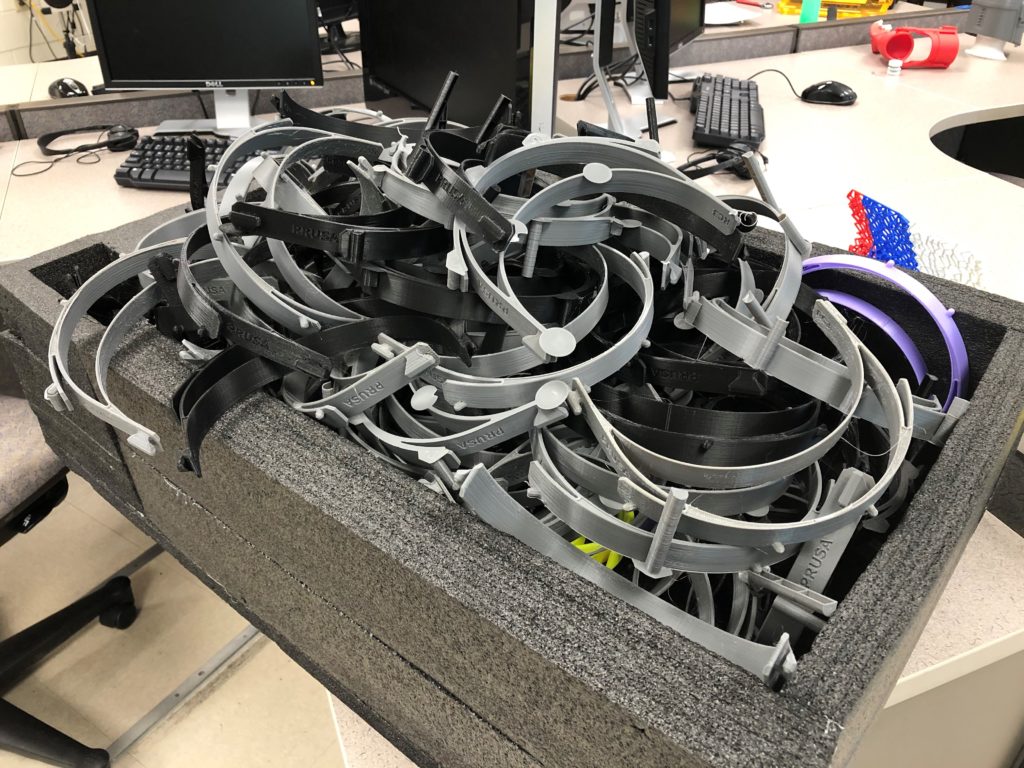We’ve seen several 3D printing disaster relief initiatives before, cataloged 3D printing for preppers, heard people opine how 3D printing will become an integral part of disaster relief, and seen the additive construction of buildings after disasters. Now, Kentucky’s Somerset Community College (SCC) is pioneering an approach where they try to simulate a halt to traditional manufacturing and then 3D print important disaster relief goods via the Rapid Response Additive Manufacturing Initiative (RRAMI). The team has trained people at five colleges to operate inexpensive 3D printers and will have a “Mock Disaster Drill (MDD1) to occur at 9am EST on February, 1st 2021.”

I can not tell you just how much joy it brings me that people want to create mock disasters. I’m also very excited about using 3D printing in austere environments and to battle crises. It’s nice to see a group do something so important and so practical. The drill includes the following Kentucky Community and Technical College System (KCTCS) sites, aside from SCC: Jefferson Community and Technical College (JCTC), Owensboro Community and Technical College (OCTC), Madisonville Community College (MCC), and Southcentral Kentucky Community and Technical College (SKYCTC).
“The RRAMI Mock Disaster Drill will be a first of its kind test event to determine how quickly and effectively a well-coordinated system of remote 3D printing production sites, with minimum operators, separated by hundreds of miles, can simultaneously fabricate products that would be necessary in an emergency event,” the program notes.
In a completely hypothetical scenario, the drill will simulate a new strain of coronavirus interrupting U.S. activities, including the halting of manufacturing, closing of shipping routes, and a disruption of the supply chain. The scenario has the teams making personal protection equipment (PPE), specifically headbands for plexiglass face shields. I do want to say, once again, that I don’t think that we should 3D print PPE. It would be much more advantageous to 3D print tooling for making PPE. Far greater numbers could be made more effectively through molding, thermoforming or textile processes.

But, as a test, the important detail is that they’re coordinating and trying out what the problems are in making disaster relief products. The files, and indeed Gcode, would be used on specific printers via a shared drive. Here, again, I’m not sure why the team is using Gcode for this instead of CAD files. Gcode would be optimal if the printers are all the same with the same settings, but otherwise CAD would be better.
The team will then, start “tracking unit quantity output, quality control, equipment specs, batching, speeds, success rates…as well set a baseline for how fast the RRAMI network can fabricate products on-demand in an emergency situation.” I think that the final baseline would be a very tricky thing to establish and rely on, since there are so many differences between sizes and geometries of parts. It may give us a much-too-optimistic idea of what 3D printing can do if it parts that are uses too flat or too compact as examples. But, I love the other KPIs that they are analyzing.
Eric Wooldridge, who started this project the SCC’s Heather Beebe of SCC, said:
“The RRAMI system is something that we have been passionate about and working toward ever since the COVID-19 shutdown began, the ability to instantaneously utilize a multitude of 3D printers, from one side of Kentucky to the other with only a single site operator, and all make the exact same product, is truly a breakthrough of manufacturing technology. And as we prove the system out and continue to add more sites and 3D printers, just imagine the potential not only for emergency production support but also just commercial fabrication as well, a statewide, unified body manufacturing system that can produce in scalable volumes, and pivot from one product to the next almost instantly. It will represent a limitless opportunity for Kentucky.”

On the whole, I’m very excited by this. Something like what SCC is doing will certainly be of great benefit to humanity some day. Our technology is versatile, modular, and resilient. We can make all manner of improvised designs and parts to solve all manner of sudden problems. After all, if there’s one thing 3D printing can do it is make a new item quickly. With iteration and improvisation, we can quickly manage to fabricate objects that others could not. But, I think that the problem-solving ability of our technology is the key ability we have.
My example has been this: 3D printing can do test swabs and, if pressed, PPE, but we could quickly help mass production technologies, such as injection molding, get started on manufacturing more than 3D printing can make. Simultaneously, what we could uniquely accomplish is to invent new things that can solve unique problems. So: door openers, inventions that can let you make taps work with your feet, automation solutions for alcohol gel dispensers, extenders for swab testing, so that people don’t have to reach into cars, etc. These are the ideal cases for us.
We are a problem-solving technology that needs to be fed problems and this is where I think we can play a big role in disaster relief. We also suck at large, flat things, so 3D printers should be used in tandem with laser cutting, lathes and other tools that complement us. Still, this is a super initiative and I hope that we see many more simulations such as this bring us closer to 3D printing disaster relief.
Subscribe to Our Email Newsletter
Stay up-to-date on all the latest news from the 3D printing industry and receive information and offers from third party vendors.
Print Services
Upload your 3D Models and get them printed quickly and efficiently.
You May Also Like
Heating Up: 3D Systems’ Scott Green Discusses 3D Printing’s Potential in the Data Center Industry
The relentless rise of NVIDIA, the steadily increasing pledges of major private and public investments in national infrastructure projects around the world, and the general cultural obsession with AI have...
3DPOD 260: John Hart on VulcanForms, MIT, Desktop Metal and More
John Hart is a Professor at MIT; he´s also the director of the Laboratory for Manufacturing and Productivity as well as the director of the Center for Advanced Production Technologies....
Etsy Design Rule Change Reduces Selection of 3D Printed Goods
Online marketplace Etsy has implemented a rule change requiring all 3D printed goods on the site to be original designs. The update to the site’s Creativity Standards states, ¨Items produced using...
E-Beam OEM Wayland Additive Partners with USC Racing to 3D Print Titanium Exhaust Collector
Every year, standards organization SAE International holds a competition called Formula SAE, in which students from both undergraduate and graduate programs design, build, and race small formula-style race cars. For...

































